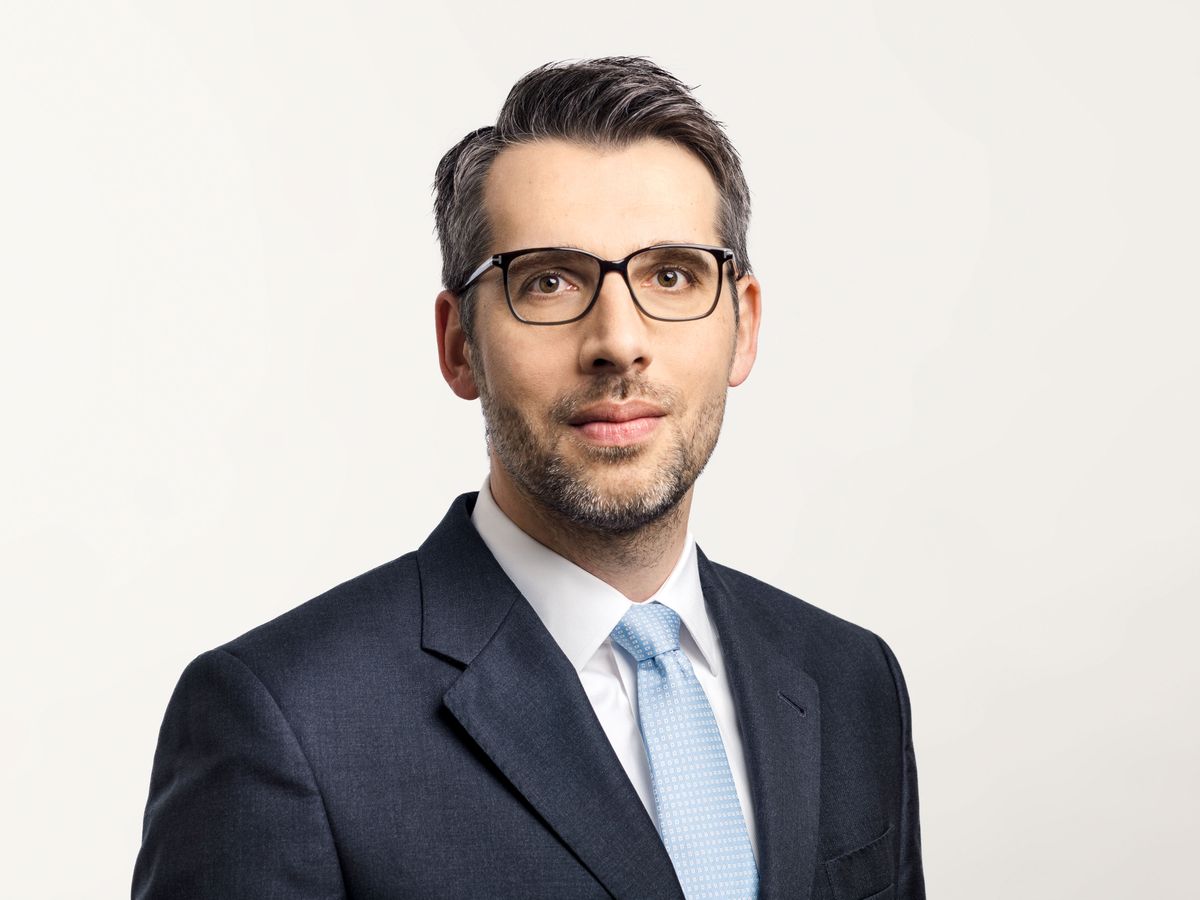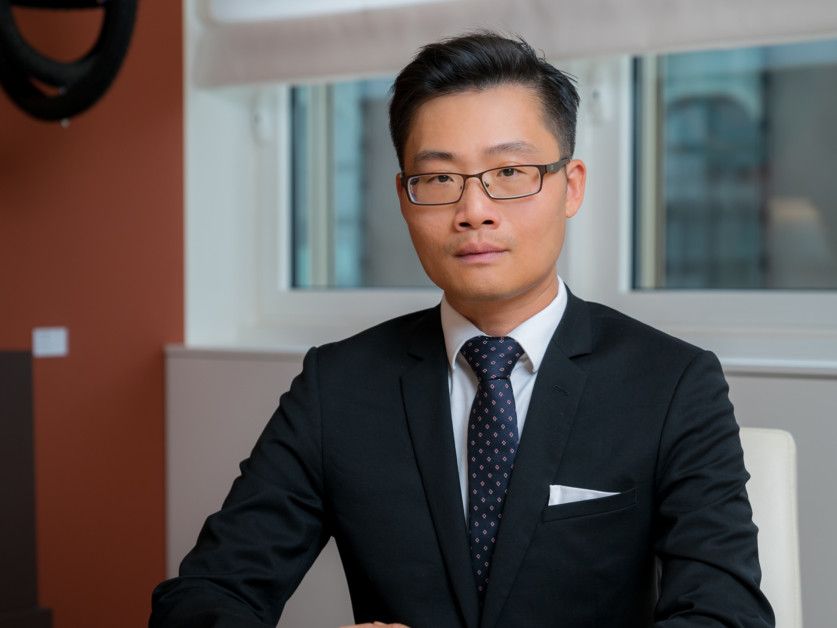
Transformative structural shifts caused by megatrends ranging from digital disruption and the energy transition to the rise of future cities, digital health and sustainable lifestyles have opened up exciting new opportunities for investors who like to look beyond the traditional ways of wealth preservation, according to senior executives from Swiss wealth manager Julius Baer.
The appetite for global investment solutions with a clear thematic focus is growing at a rapid rate, especially with clients from the Gulf Cooperation Council (GCC) countries, Carsten Menke, the Head of Next Generation Research at Julius Baer, told Gulf News in an interview.
Megatrends on the rise
“From our perspective, it’s not so much about investing in the present. The world is changing, and we often struggle to comprehend the complexity of the trends that are developing around us. Some of them seem might seem insignificant or disconnected at first sight,” Menke said.
“Take the theme of future cities, for instance. It’s not just about smart technology, but also about urbanisation, connectivity, social cohesion and sustainability driving our future cities. That is the power of these megatrends — it’s not just a single trend but a multitude of them that drive one particular theme. These trends become even more powerful as they join forces, creating unstoppable and irreversible megatrends,” he added.
Trendspotting for its legion of investors is what Julius Baer has been pioneering for the past several decades, and with good measure. With a 132-year legacy of wealth management and investment consultancy, the Zurich-headquartered private bank is among the oldest of Swiss banking institutions. But its Next Generation investment philosophy is anything but traditional — it challenges the traditional sectoral classification pursued by most financial institutions to seek instead structurally growing industries and companies, and group them according to the common themes they represent.

Citing future mobility as an example, Menke said the bank would rarely focus on a single company to decide on a thematic investment in the sector. “On a five-, 10- or 15-year horizon, it is exceedingly difficult to predict that this particular company will be the winner. Instead, our Next Generation investment philosophy is about the entire future mobility value chain — it’s about the EV battery materials, such as cobalt, lithium or nickel, the battery suppliers, the car component and technology suppliers, the car companies themselves and any associated mobility services or infrastructure,” he said.
“We need to assess whether the whole value chain will appreciate, and this is how we want to propose the idea of future mobility as an investment to our clients,” Menke added.
Leaders Vs laggards
The other distinction that the bank would always make is to determine whether a company is a leader or a laggard — an assessment that Menke said was based on three pillars.
“The first one is the company’s positioning among its peers. What kind of products and services does it offer and are they market leading? The second step is about financial strength and is a core of our Next Generation investment philosophy,” he said. “We focus on profitable companies with a solid balance sheet.”
The third pillar was about corporate culture, which according to Menke was critically important for any kind of industry which is facing a transition, such as the car industry.
“In such an industry, you have many people still working on conventional cars which are profitable and generating most of the cash flow, and then you have the other camp of more visionary people who are developing the electric vehicles [EVs],” he said. In case the company management was unable to align the interests of both sides and justify the product development, then it could fatally damage the company’s future prospects, Menke explained.
“Think of Nokia and Kodak — two companies which had the all the technologies in the drawer but were not brave enough to follow them. That’s why we always look very in-depth at the ESG parameters of a company — especially on the social and governance side — to figure out if it has the right mindset and the attitude to harvest the benefit of the future,” he said.
Focus on ESG
The focus on the ESG fundamentals is integral to the bank’s overall investment strategy. It is also closly aligned with client preferences. The third edition of Julius Baer’s annual Global Wealth and Lifestyle Report that was released earlier this month found that high net-worth individuals (HNWIs) are increasingly aligning their financial and investment decisions more closely with their personal values. Across all regions, sustainability was a critical consideration for most respondents.
Furthermore, Menke stresses that “thematic investing is tactical investing”. Despite looking at long-term trends, which are unfolding quite far into the future, the companies selected are also exposed to more short-term cyclical swings. Future Mobility again is a case in point. “A recession today would hit the car companies sales and thus their share price performance, no matter how many electric vehicles they sell in 10, 15 or 20 years.”
Global Wealth & Lifestyle Report
Tracking the economy and purchasing power is what the Swiss bank does though its annual Global Wealth and Lifestyle Report, which this year found that Europe, Middle East, and Africa (EMEA) remains the second most expensive region globally with four cities (London, Monaco, Dubai, and Johannesburg) in the top 10. Reflecting those bullish sentiments, Julius Baer announced last week plans to open an advisory office at the Qatar Financial Centre subject to regulatory approvals.
The report also found a greater focus among respondents on areas that might enable them to plan for the years ahead, such as on health insurance, wellness, and education — priorities that reflect on the evolving Julius Baer megatrends as well.

“People in general enjoy a much longer lifespan today thanks to better education, healthier lifestyles, the quality of food and advances in medicine and health care,” said Dr Damien Ng, Next Generation Research Analyst at Julius Baer, on the rise of ageing and longevity as a trend.
“But when people live longer, the demand for certain types of products and services will also increase dramatically — such as more consumption around the place of living, the demand for food and bigger spending on healthcare,” he added.
Opportunities in energy transition
For Menke, cutting though the hype often associated with thematic investing is critical to be able to offer clients solutions that take a long-term view on the future. For a generation of investors more conscious about securing their financial future in a sustainable manner, he said, this will pivot around themes such as the energy transition and future cities in a multipolar world.
Describing the energy transition as the path to carbon neutrality in four waves, Menke said these comprised clean energy growth in renewables such as wind and solar, future mobility, the decarbonisation of heavy industries, and the food supply chain — specifically the greenhouse gas (GHG) emissions created by animals, with dairy and beef in focus.
“A transition is never a leap – it is always a gradual process. We can’t change the world overnight. For example, talking of hydrogen, if we are able to replace step-by-step high sources of CO2 with low-carbon sources, then it is a step in the right direction and there is no debate about the role of blue hydrogen on the path towards green hydrogen,” he said.
The appeal of future cities
On the appeal of future cities, Menke said this was not just about smarter cities but more about sustainable and more liveable cities.
“The mantra of future cities is not about putting as much technology as possible into a city to make it as smart as possible, but rather figure out what the pain points of the city are and try to fix the most important ones first. This could be about traffic, air quality, waste management and so on. In some parts of the world, I would argue that the cities do not need to be technology smart first, but socially smart first,” he said.
According to the World Economic Forum, the share of the global urban population will reach 70 per cent by 2050, by when the number of megacities with a population of more than 10 million people will also climb from 33 to 50.
Even as these megatrends take shape, the influence of geopolitics on the global economy has emerged as one of the biggest trends of our time, according to Menke.
The idea of reshoring production capacity back to the US and Europe will join forces with the global supply chain vulnerabilities laid bare during Covid to pave the way for increasing automation and robotics to substitute the labour used for outsourcing.
“There are many megatrends that are driving the change of our economy and society. However, for companies to benefit from these trends, ultimately it is about the consumers accepting any new products and services that are being offered,” Menke said.
Covid-19 altered the future of digital health

The prolonged aftermath of the Covid-19 pandemic and factors such as an ageing population and the rise of chronic diseases have dramatically increased the uptake of digital health and will be the primary drivers for future changes in healthcare, according to Dr Ng from Julius Baer.
“We make a clear distinction between the different segments of trends emerging within digital health,” said Dr Ng.
“The first one is telemedicine, and one of the ways in which telemedicine works beyond the obvious is for example in mental health consultations for patients who might not like to consult a doctor face-to-face,” he said. “The second element is the cost of digital health and the rising cost of healthcare — wherein in countries like the US it is increasingly borne out of pocket,” Dr Ng added.
Electronic health records
For him, another major trend was electronic health records. “There is an urgent need to synchronise the valuable data contained in electronic health records, so that countries can gain the maximum out of such platforms.”
A related trend for Dr Ng was securing the confidentiality of patient records — a major issue that has underlined the need to bolster their cyber resilience for healthcare companies.
Citing India as an example for the future of healthcare, he highlighted how the government had allocated a larger share of its 2022/2023 annual healthcare budget to digital health compared to the previous year.
Genomics was another trend that the bank was pursuing with keen interest. “Genomics can bring real breakthroughs in tackling chronic diseases such as cancer or Alzheimer’s and make personalised treatment possible for every patient. Across the world — whether it’s in China, the US, the UAE, or Germany — there is a lot of focus on genomics as a megatrend,” he said.




